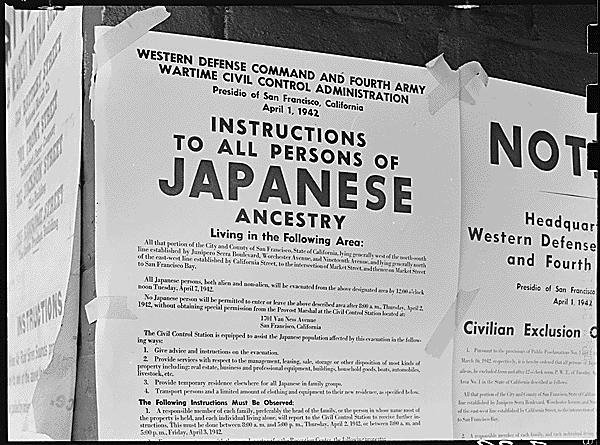Spanning over two centuries, the Japanese Sakoku isolationist period ends abruptly in 1854. The United States sends four Navy ships to Japan to forcefully establish trade via the Convention of Kanagawa. Between 1854 and the bombing of Pearl Harbor, Japanese immigrants (Issei) and their U.S. born children (Nisei), establish roots primarily in Hawaii and California. First and subsequent generations make a living primarily in labor intensive industries, enduring low wages and poor work conditions...
Dating back to 1915, the United States and Japanese governments experience a series of disagreements that set the stage for hostile relations. Among them, the Japanese government demands exclusive privileges to Chinese territories in an effort to improve their economic status in the region; the United States begins to close its borders to Japanese immigrants during the Great Depression;and the Japanese begin to demonstrate increasingly forceful plans of conquering the South Pacific...

Japanese immigrants and their American born children find themselves at the center of suspicion and hatred when news breaks of the Pearl Harbor attacks on December 7th of 1941. Hysteria and bigotry quickly spread through a fearful continental United States, as Americans anticipate future strikes. In a response to the attacks, President Roosevelt enacts order 9066 on February 19th, 1942, only ten weeks following the Japanese led strikes, stripping tens of thousands of American citizens of Japanese ancestry from their rights...
President Franklin D. Roosevelt's Executive Order 9066 was enacted on February 19th, 1942. The lives of Japanese Americans were disrupted, families and communities broken up. Internment camps were set up precariously in various states, including California and Arizona. Thousands of people were shipped off to remote regions to live in conditions without any semblance to their previous ones. The Japanese-American community still found ways to make life meaningful and enjoyable, despite their circumstances...